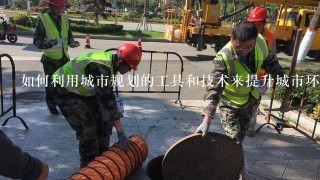如何利用城市规划的工具和技术来提升城市环境的保护?

Answer:
Utilizing City Planning Tools and Technologies for Environmental Protection
1. Land Use Planning:
- Establish zoning regulations to control development in sensitive areas, such as wetlands, forests, and green spaces.
- Implement mixed-use development to reduce car dependence and promote walkability.
- Use green infrastructure, such as parks and green roofs, to mitigate heat island effect and improve air quality.
2. Transportation Planning:
- Design pedestrian-friendly streets and bike lanes to reduce reliance on private vehicles.
- Implement congestion pricing to discourage unnecessary vehicle use.
- Promote public transportation, electric vehicles, and active transportation.
3. Water Resources Management:
- Establish water treatment plants to improve water quality.
- Implement stormwater management systems to reduce flooding and pollution.
- Use green technologies, such as rainwater harvesting and greywater treatment, to conserve water resources.
4. Waste Management:
- Implement waste reduction and recycling programs.
- Design waste management facilities with minimal environmental impact.
- Use renewable energy sources for waste collection and treatment.
5. Urban Greening:
- Plant trees and vegetation throughout the city to improve air quality, reduce heat island effect, and provide habitat for wildlife.
- Create green spaces, such as parks, gardens, and community gardens.
- Use green roofs and walls to enhance the urban fabric.
6. Climate Resilience:
- Design buildings and infrastructure to withstand extreme weather events, such as floods and heat waves.
- Implement renewable energy sources to reduce carbon emissions.
- Use adaptive planning strategies to cope with climate change impacts.
7. Public Engagement and Education:
- Involve residents in urban planning processes.
- Provide educational programs to raise awareness about environmental issues and the importance of sustainable practices.
- Use technology to monitor and track environmental performance.
8. Data-Driven Decision-Making:
- Collect and analyze data on environmental conditions and urban sustainability.
- Use data-driven tools to identify areas for improvement and track progress over time.
- Share data with stakeholders and the public.





































































